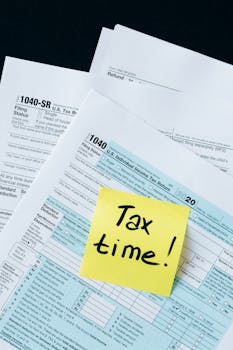What is summative assessment?

What is Summative Assessment?
Summative assessment plays a crucial role in education, helping to evaluate student learning at the end of an instructional period. Unlike formative assessments, which focus on ongoing feedback during the learning process, summative assessments aim to measure what students have learned after a unit or course. This type of assessment not only helps educators understand student progress but also informs curriculum development and instructional strategies.
Understanding Summative Assessment
When we think about education, it’s essential to consider how we measure student knowledge and skills. Summative assessment is one of the primary methods used for this purpose.
What is Summative Assessment?
Summative assessment is a method of evaluating student learning, skill acquisition, and academic achievement at the conclusion of a defined instructional period, such as a unit, course, or program. It provides a comprehensive overview of what students have learned compared to the established learning objectives.
For example, consider a final exam that covers all the material taught in a semester. This exam assesses whether students have grasped the key concepts and skills outlined in the curriculum. Other examples include standardized tests and final projects. These evaluations are often formally graded and can significantly influence students’ overall grades.
For a deeper understanding of summative assessment, you can explore the definition and importance on EdGlossary.
Key Characteristics of Summative Assessment
Summative assessments have several defining features that set them apart from other types of evaluations.
- Timing: Summative assessments are typically administered at the end of an instructional period, unlike formative assessments, which occur throughout the learning process.
- Purpose: The primary goal is to evaluate student learning, providing a snapshot of their understanding at a specific point in time.
- Outcomes: Results from summative assessments often contribute to final grades and can influence students’ progression to the next level of education.
These characteristics make summative assessment a critical tool for educators seeking to measure and understand student achievement effectively.
Types of Summative Assessments
Summative assessments come in various forms, each suited to different educational contexts and objectives.
Standardized Tests
Standardized tests are a common form of summative assessment used to evaluate student learning on a large scale. These tests are designed to assess a wide range of knowledge and skills in a uniform manner, making it easier to compare results across different student populations.
While standardized tests can provide valuable data, they also come with challenges. Critics argue that they may not fully capture a student’s abilities or learning experiences. Nonetheless, they play a significant role in assessing educational outcomes at a national level. For more insights on standardized testing, check out Top Hat.
Final Projects and Portfolios
Final projects and portfolios offer an alternative approach to summative assessment. They allow students to demonstrate their understanding of the material by applying their knowledge in practical ways. For instance, a science student might conduct a research project and present their findings, showcasing their learning process and outcomes.
Portfolios, on the other hand, compile a range of student work over time, providing a comprehensive view of their skills and progress. This type of assessment not only evaluates what students have learned but also encourages creativity and critical thinking.
Exams and Quizzes
Traditional exams and quizzes are perhaps the most recognized forms of summative assessments. They can vary in format, from multiple-choice questions to essay prompts, allowing educators to assess a wide range of knowledge and skills in a structured way.
These assessments are often high-stakes, meaning they can significantly impact a student’s final grade. It’s crucial for educators to design exams that accurately reflect student learning and align with the learning objectives established at the beginning of the course.
The Role of Summative Assessment in Education
Summative assessments hold significant importance in the educational landscape, influencing various aspects of teaching and learning.
Evaluating Student Learning
One of the primary functions of summative assessment is to evaluate student learning outcomes at the end of an instructional period. By analyzing the results, educators can determine how well students have mastered the material and identify areas for improvement. This evaluation is essential for ensuring that educational programs are effectively meeting their goals.
Summative assessments also provide a means for accountability, helping schools and educators demonstrate the effectiveness of their teaching methods. For a more in-depth discussion on this topic, refer to Houghton Mifflin Harcourt.
Influencing Future Instruction
The insights gained from summative assessments can guide instructional decisions and curriculum adjustments. For example, if a significant number of students struggle with a specific concept, educators can modify their teaching strategies or provide additional resources to address these gaps.
Moreover, the data collected from summative assessments can inform stakeholders about broader educational trends, enabling them to make informed decisions about curriculum development and resource allocation.
Best Practices for Implementing Summative Assessments
To maximize the effectiveness of summative assessments, educators should consider several best practices.
Setting Clear Objectives and Goals
Before administering any summative assessment, it’s crucial to set clear objectives that align with the overall learning goals. This alignment ensures that the assessment accurately measures what students are expected to learn. When students understand the objectives, they are more likely to engage with the material and perform well on the assessment.
Providing Feedback and Support
While summative assessments focus on evaluating student learning, providing feedback is still vital. After assessments, educators should take the time to discuss results with students, highlighting both strengths and areas for improvement. This feedback loop helps students understand their performance and fosters a growth mindset.
In conclusion, summative assessments play an essential role in the educational process, helping to evaluate student learning and inform instructional practices. By understanding and implementing effective summative assessments, educators can enhance student outcomes and contribute to a more effective learning environment.